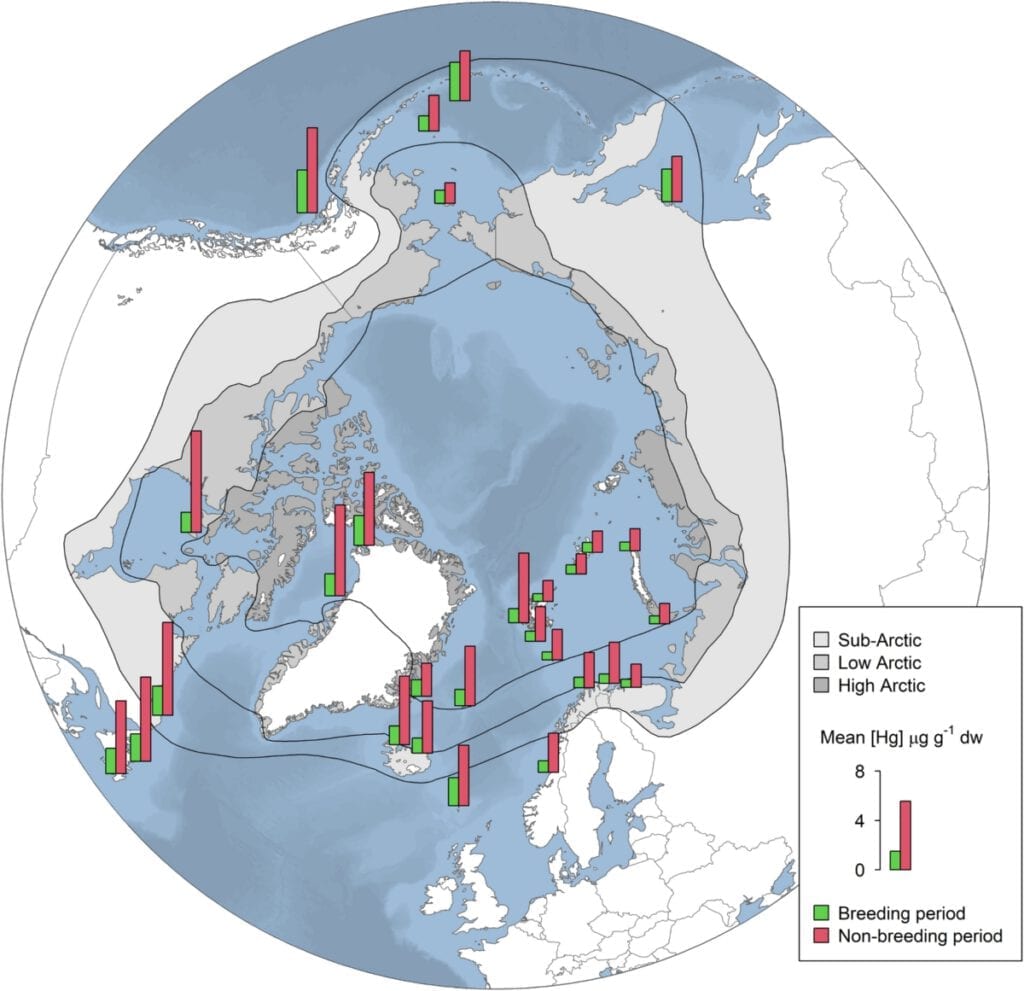Feathers reveal mercury contamination in alcids in the Arctic
In a large pan-Arctic study, a multinational group of researchers have investigated the concentrations of mercury (Hg) in nine alcid species breeding in the Atlantic and Pacific Oceans. Large differences were found between regions and seasons, indicating that some areas and periods pose greater threats to seabirds than others in terms of exposure to mercury, a contaminant that is known to have negative effects on seabird health and reproduction.
Top predators at risk
Concentrations of mercury have increased in marine ecosystems over the last decades through anthropogenic emissions. Mercury, which is of concern for wildlife and human health, is assimilated by organisms through their diet and biomagnifies through food webs. Top- and meso-predators, such as marine mammals and seabirds, therefore end up containing the highest concentrations of mercury. Using data collected as part of the SEAPOP monitoring programme and the SEATRACK-project, a large international group of researchers has investigated the seasonal mercury contamination of seabirds on a large, pan-Arctic scale.
Different feathers tell different stories
Since approximately 70% to 90% of the mercury body burden is excreted into growing feathers, the researchers could utilize feather samples to get information about mercury accumulated in the birds during the period prior to the last moult. Alcids undergo a partial moult of the head, cheeks and neck in spring, in addition to a complete moult of all feathers in the autumn. Thus, mercury in head feathers sampled in the summer inferred mercury contamination during the previous non-breeding period, while body feathers contained mercury accumulated throughout the previous breeding season. Feather samples for this study were taken from nine alcid species in 28 breeding colonies located in the North Atlantic and North Pacific Oceans.
Spatial and seasonal variations
There turned out to be large variations in contamination levels within and between the different regions studied, and between seasons. The accumulations of mercury in the alcids were higher outside the breeding period, showing that the birds are more exposed to contaminants in their wintering areas and during migration than when they are close to the colonies. The highest mercury concentrations, both in the breeding and non-breeding seasons, were observed in the West Atlantic region, followed by the Pacific and the East Atlantic. The differences in mercury concentration in seabirds between breeding and non-breeding season were also larger in the West Atlantic than in the other two regions. Moreover, in most of the seabird colonies, the researchers observed individual mercury concentrations above 5 μg g−1 dry weight, a level at which negative effects on health and reproductive abilities can be expected. The study indicates that the non-breeding period might represent an important risk for sensitive populations, especially those breeding in the West Atlantic Arctic, and it demonstrates the need to continue close monitoring of seabird populations to understand the implications of mercury exposure on population dynamics.
Read the article:
Contact person: Sébastien Descamps, Norwegian Polar Institute

Photo: Venke Ivarrud/SEAPOP

Photo: Céline Albert